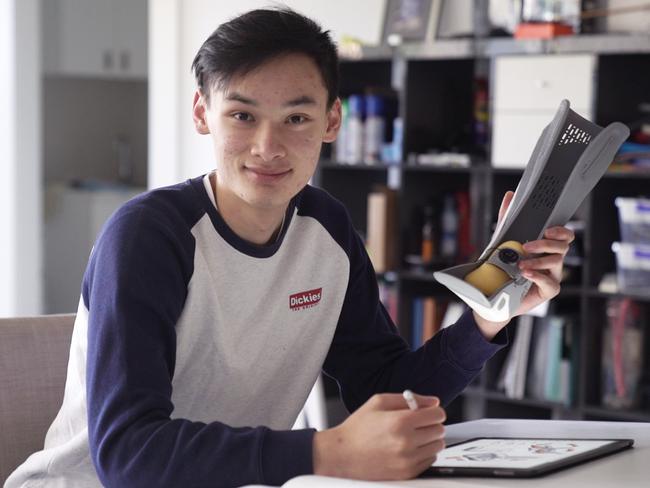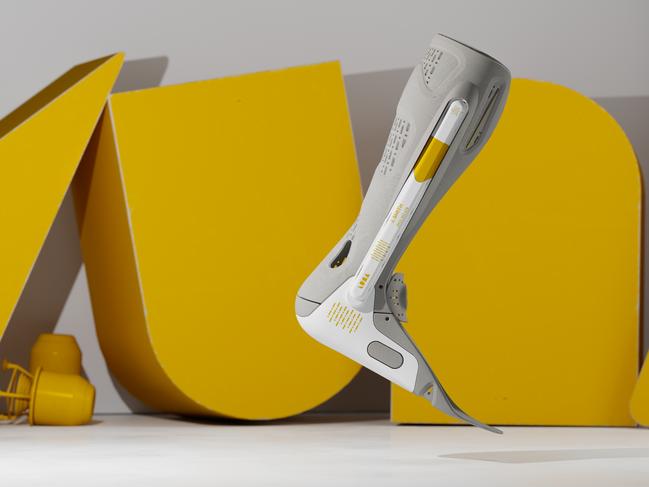Australian invention to help children walk pain-free wins global praise in James Dyson Awards 2021
It began as a way to save his cousins from pain, but a Melbourne designer could help children with paraplegia walk with confidence.
National
Don't miss out on the headlines from National. Followed categories will be added to My News.
Exclusive: What began as a university assignment to help his cousins could save hundreds of Australian kids from unnecessary pain and huge medical bills.
Melbourne industrial design graduate Aaron Nguyen’s invention of an adjustable ankle brace for children suffering paraplegia was named as one of the top 20 designs worldwide in the James Dyson Awards on Wednesday; an achievement he hopes will help get the new device to kids sooner.
And the 22-year-old inventor is already in talks with a Sydney firm to bring it to market.
Mr Nguyen said he chose to create a new design for a child’s ankle orthosis — a medical brace designed to help kids walk — after his Aunt explained the pain her children, aged 8 and 14, experienced when outgrowing their current braces.
The pair suffer from Hereditary Spastic Paraplegia; a degenerative disorder that causes weakness in the legs and is thought to affect more than 500,000 people, including almost 2000 Australians.

“Three years ago my Aunty came to me and asked if I could come up with a better solution,” he said. “She showed me these horrific pictures of (my cousins’) legs and feet getting cut up and blistered.”
Kids with HSP need to get a new ankle brace every six to eight months as their feet grow, and Mr Nguyen’s aunt Jem Truong said living with the condition was “like a rollercoaster ride”. Her nephew’s invention, she said, was giving them “hope for a better future”.
“We have our many ups and downs, highs and lows, and my children are my little warriors,” Ms Truong said.
“Their determination and resilience to keep fighting for a life of independence and integration keeps us going everyday.”
To create what he calls the LUNA AFO, Mr Nguyen said he approached companies making existing devices and worked with a biomedical engineer to develop a modular brace made of a kind of Nylon that could be adjusted to suit growing feet and legs.
The adjustable brace could reduce the number of orthoses families would need to buy — each costing $1000 — and could stop crude workarounds like heating and stretching the braces to extend their life.
“Halfway through the process, some of the industry professionals said ‘we’ve been waiting for someone like you’,” he said. “They’re all sympathetic to the children as well but they were limited in what they could do.”

The invention was the only Australian creation listed in the top 20 global entries to this year’s James Dyson Awards, which will be judged by Sir James in November.
Dyson design engineering global head John McGarva, one of the judges, said the LUNA brace was chosen for its potential impact and evidence “of having pushed really hard to develop the idea and take it forward”.
“It’s filling a need and really tackled the design brief very well, I felt,” he said. “Devices like that would have a big impact on the families and the users because of the additional comfort they bring.”
Mr Nguyen said he was now “in the process of starting my own business” and working with Sydney firm Ability Made to produce a second version of the orthosis that could be medically approved and sold.
“Hopefully it can empower these kids and help them have control of their own bodies,” he said.





